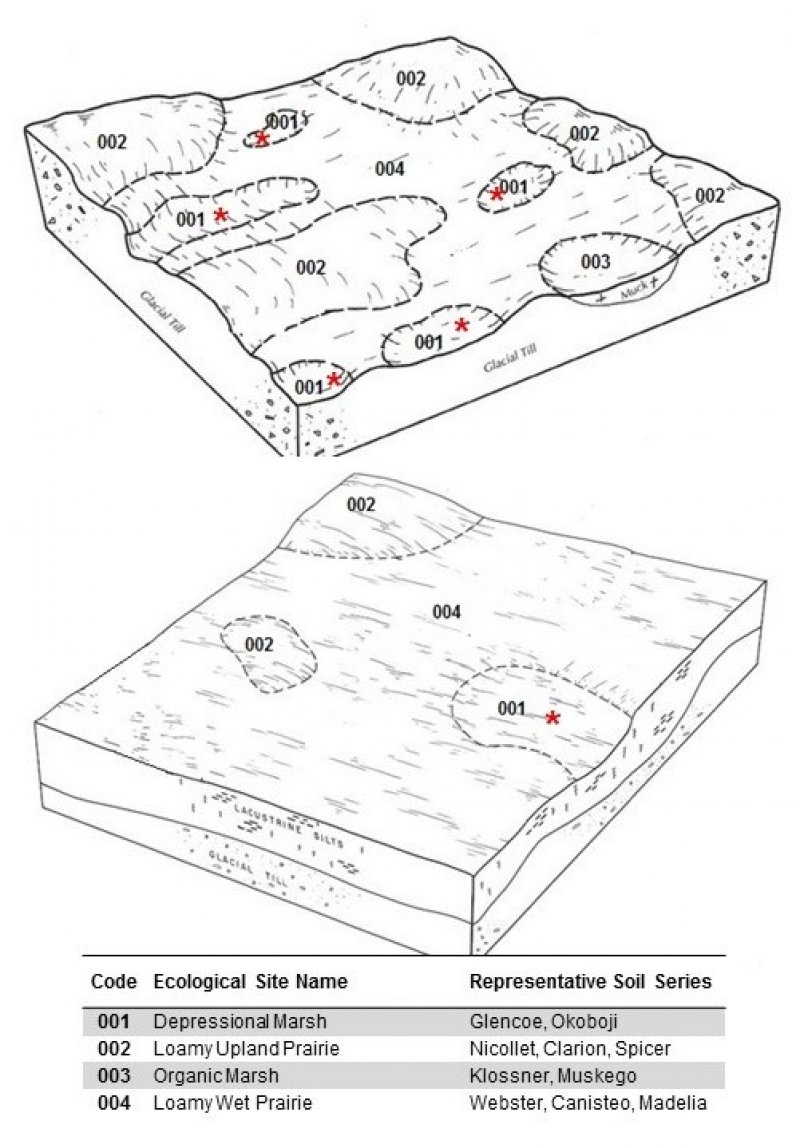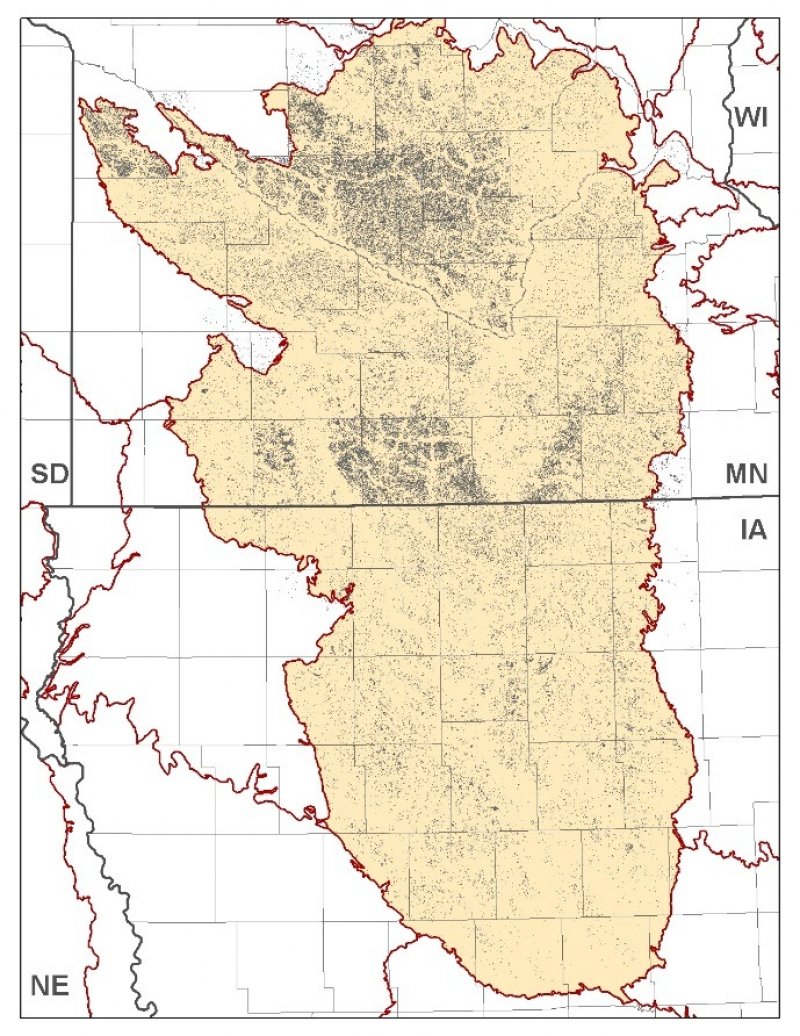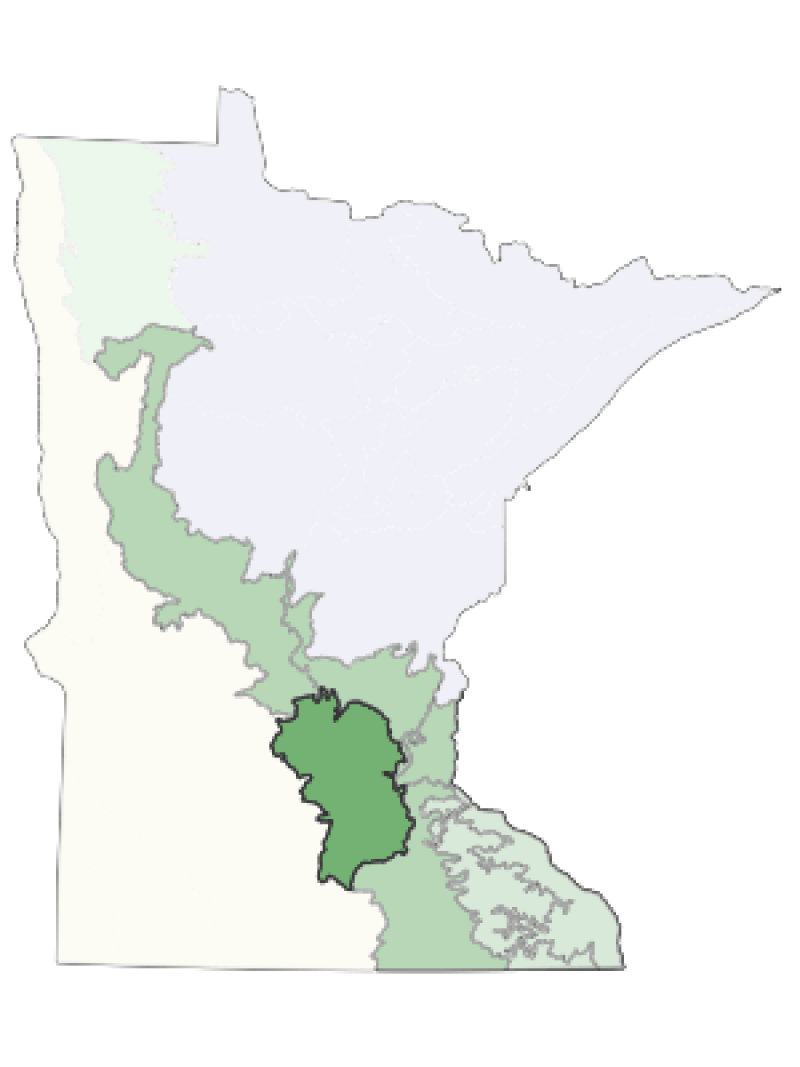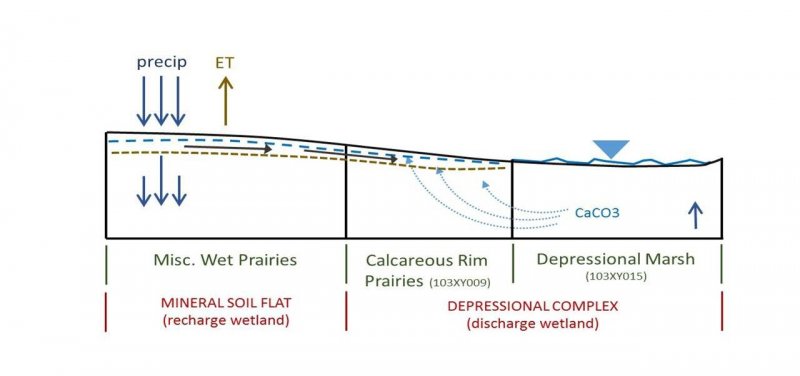
Natural Resources
Conservation Service
Ecological site R103XY015MN
Depressional Marsh
Last updated: 10/04/2023
Accessed: 12/19/2025
General information
Provisional. A provisional ecological site description has undergone quality control and quality assurance review. It contains a working state and transition model and enough information to identify the ecological site.
MLRA notes
Major Land Resource Area (MLRA): 103X–Central Iowa and Minnesota Till Prairies
MLRA 103 is in Minnesota (56 percent) and Iowa (44 percent) and consists of approximately 18 million acres. It is in the Western Lake Section of the Central Lowland Province of the Interior Plains in an area known as the "Des Moines Lobe" of the Wisconsin-age ice sheet. The MLRA is mostly on a young, nearly level to gently rolling, glaciated till plain that has moraines and glacial lake plains in some areas. The plain is covered with glacial till, outwash, and glacial lake deposits. Recent alluvium consisting of clay, silt, sand, and gravel fill the bottoms of most of the major river valleys. Paleozoic bedrock sediments, primarily shale and limestone, underlie the glacial deposits in most of the area.
The annual precipitation increases from northwest to southeast. Most of the rainfall occurs as high-intensity, convective thunderstorms during the summer. Two-thirds or more of the precipitation falls during the freeze-free period. Snowfall is common in winter. Ground water supplies are adequate for the domestic, livestock, municipal, and industrial needs. Nearly all of this area is farmland, and about four-fifths is cropland.
Classification relationships
Major Land Resource Area (MLRA): Central Iowa and Minnesota Till Prairies (103) (USDA Handbook 296, 2006)
USFS Subregions: North Central Glaciated Plains Section (251B); Upper Minnesota River-Des Moines Lobe (251BA) and Southern Des Moines Lobe (251Be) Subsections (Cleland et al. 2007)
Relationship to Other Established Classifications:
The reference state shares similarities with Minnesota Department of Natural Resources MRp83 Prairie Mixed Cattail Marsh
Ecological site concept
The Depressional Marsh ecological site is extensive (>100,000 acres) in MLRA 103 and occurs in the central prairie region and the northeastern Big Woods ecoregion. Hydrologic interaction with adjacent sloping ground classifies this site as a recharge wetland. Landscape positions include slightly concave (depressional) to linear segments. Soils are very poorly drained, frequently ponded, and have a relatively high organic matter content in the surface and near surface horizons. Plant species dominance is influenced by water depth.
Associated sites
| R103XY001MN |
Loamy Wet Prairies The Loamy Wet Prairies ecological site is located on inter-depressional linear slopes and slight depressions on till plains, moraines, and short-lived lakeplains. Soil parent materials are loamy till and lacustrine materials. The drainage class is poorly drained but the site does not flood or pond. |
|---|---|
| R103XY009MN |
Calcareous Rim Prairies The Calcareous Rim Prairies ecological site is characterized by landscape position (rim), calcareous soils, low slope (0-2%), and poorly drained soils. This site is hydrologically connected to adjacent ponded depressions. This site does not pond. |
| R103XY005MN |
Clayey Upland Prairies The Clayey Upland Prairies ecological site is located on uplands, including lakeplains, ground moraines, and till plains. Soils in this ecological site have a dark surface layer (mollic epipedon) and clayey textures. This site is not subject to flooding or ponding. Drainage class is somewhat poorly drained to well drained. |
| F103XY026MN |
Clayey Upland Forests The Clayey Upland Forests ecological site is located on uplands. The soils are derived from clayey till and lacustrine (lake) materials, and drainage class ranges from somewhat poorly drained to well drained. The soils have a thin or moderately thick mollic (dark) surface. |
| R103XY003MN |
Sandy Upland Prairies The Sandy Upland Prairies ecological site is located on uplands including outwash plains and valley trains along modern river valleys. Soils are formed from sandy and course loamy outwash and loamy-mantled outwash. Sites do not flood or pond. The reference state site concept is a mesic native prairie. |
| F103XY028MN |
Clayey Wet Forests The Clayey Wet Forests ecological site occurs on clayey textured soils that have a seasonal depth to soil saturation of 0 to 30 cm. This site is located on concave or linear low-slope areas, but no flooding or ponding usually occurs. |
Similar sites
| R103XY016MN |
Organic Marsh The Organic Marsh ecological site occurs in the centers of medium to large-sized depressions and is typically surrounded by mineral soils associated with the Depressional Marsh ecological site. Soils are very poorly drained and ponded with deep water throughout the growing season in most years (i.e. semi-permanent wetlands). Soils are developed from organic parent materials. |
|---|
Table 1. Dominant plant species
| Tree |
Not specified |
|---|---|
| Shrub |
Not specified |
| Herbaceous |
(1) Typha latifolia |
Click on box and path labels to scroll to the respective text.
Ecosystem states
| T1A | - | Disturbances change plant community |
|---|---|---|
| R2A | - | Management inputs to restore site |



